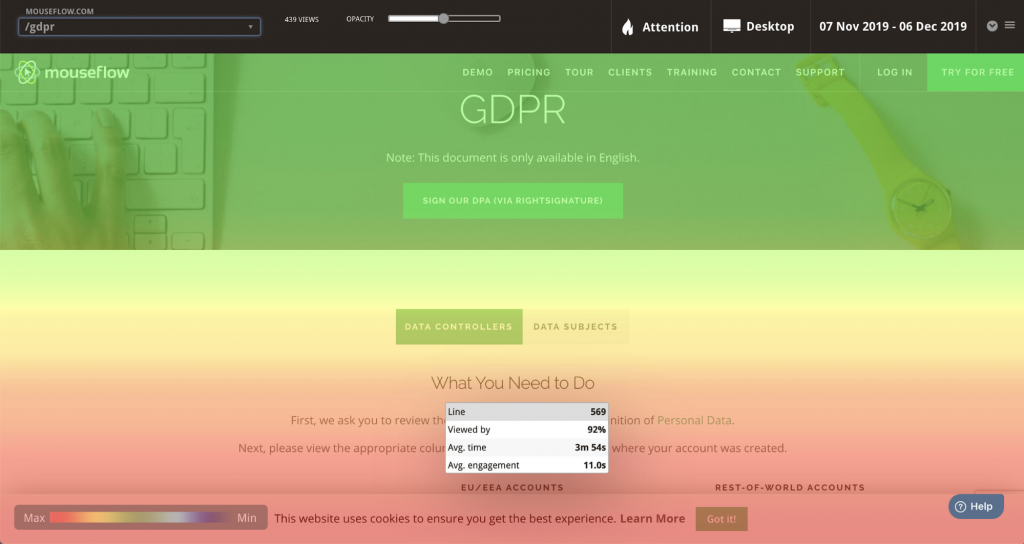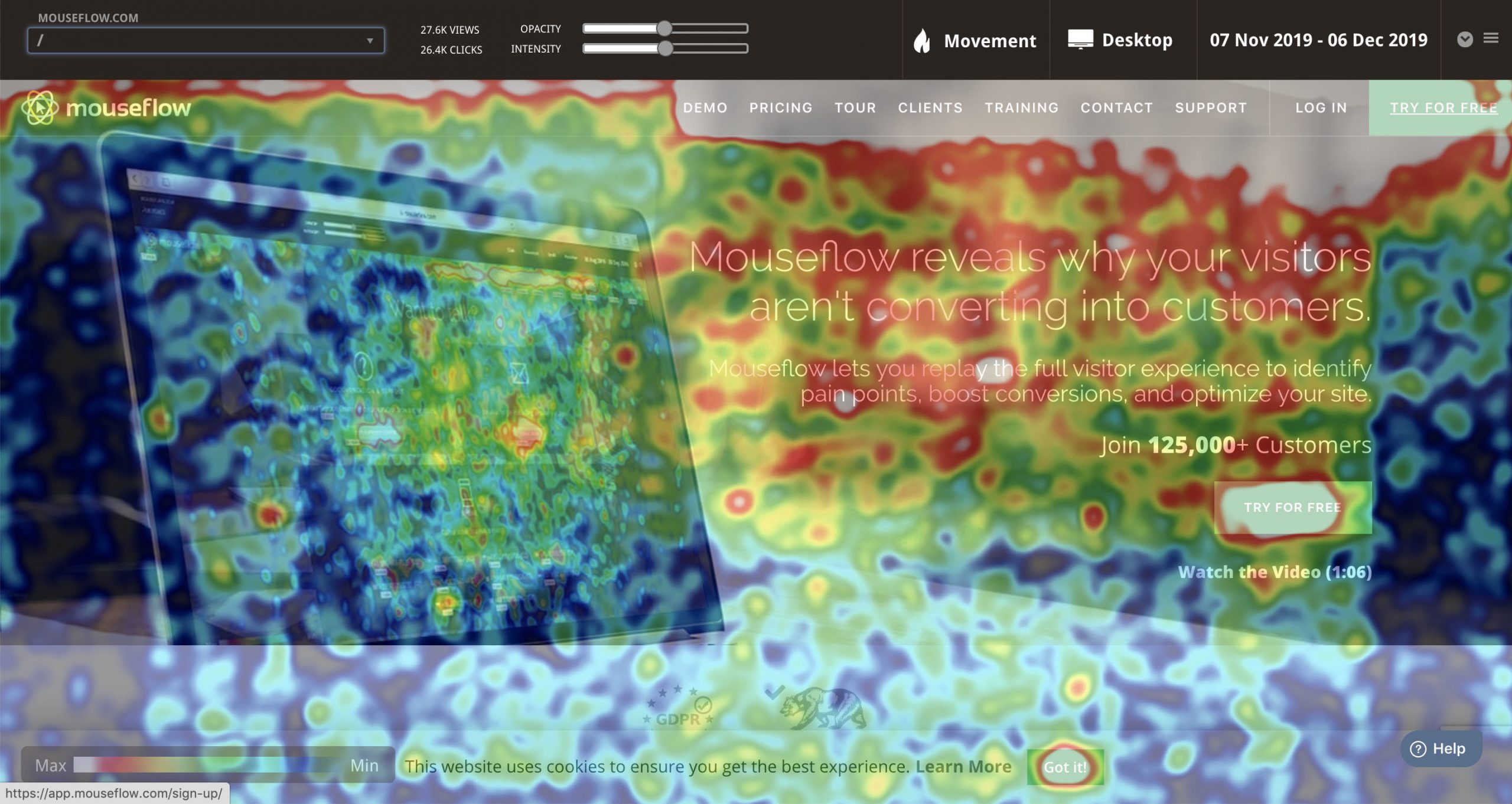Heat Map: An unavoidable tool that tells you all about your customers’ engagement on your website
Did you redesign your website recently? Or just created your first website? You may even have had your website for many years. No matter where you and your company are in this process, the goal must be the same – your website should work for your users.
Quick Links
For a company, it is fundamental to know its customers. Who are they? What do they search for when they visit your website? And are these answers consistent with the beliefs that you and your company have about your target group? You can have a myriad of assumptions and work experience from your industry, but maybe it’s time to surrender to technology and introduce raw data in the form of heatmaps.
Can a heat map add value to your business?
The short answer to this is yes! A heatmap is the ultimate way to measure your customers’ actions on your website. A heatmap can tell you how visitors interact with your website and – just as importantly – why they are not interacting.
One company that makes this possible is Mouseflow, who offers an all-in-one analytic tool with heatmaps. The heatmaps are dynamic, based on full datasets, updated with the latest data, and automatically maintained. But to get a better understanding of exactly how heatmaps can add value to your business, we will start by explaining what heatmaps are.
What are heat maps?
Basically, a heatmap should be understood as a graphic layer on top of your website. This graphic layer makes it possible to show, among other things, the clicks that are made on your website but also the clicks that are neglected. The more you do in a certain area, the hotter the area becomes, hence the name heatmap.

The picture illustrates a scroll heatmap, and there are various heatmap tools you can use. These tools could include:
- Click Heat Map
Shows you exactly where users are clicking on your website. This tool helps you to understand whether your call-to-action and clickable elements convert.
- Scroll Heat Map
Shows you how far users scroll down a page. A Scroll Heat Map uses colors to represent the most and least viewed parts of a page. This is beneficial in the role of determining where to place content on a page.
- Attention Heat Map
Helps you to understand how long the average user is spending on your page. It is often compared to scroll heatmaps and look similar, but shows time instead of scrolling.
- Movement Heat Map
Identify the visitors experiences by telling where they are clicking, pausing and scrolling. It is beneficial to ensure and maximize the visitors experiences.
- Geographical Heat Map
Will tell you the numbers of users from a specific geographic location. The more users from a specific location, the more vivid the colors over that area becomes.
Common to these tools is that they all give you insights that help you convert.
Three reasons to use heat maps in 2021
Hopefully, you have now become wiser about what heatmaps are and become aware of what value they can create for your business. Whether you are convinced or not, we have picked out three essential reasons why you should prioritize and invest in heatmaps in 2021.
Take advantage of your data
By using heatmaps, you and your company are given essential data about your customers’ user behavior. The user behavior is present, whether it’s measured or not, so why not collect and use the data to ensure that you understand your customers’ movements around the website?
See what works with A/B testing
In the lifespan of your website, new designs or website layouts are constantly being developed. By using heatmaps, UX designers can investigate whether users are acting as expected. Do users understand why the button is green instead of red and where to press if they need to put an item in the basket? Are they clicking on stuff that isn’t even buttons?
Tracking with heatmaps
Heatmaps and tracking let you know how your users move along the conversion funnel. As an example, you can use mouse tracking which makes it possible to see where most conversions are likely to be made, and whether the customer can find the most important elements such as calls to action. At the same time, it is also possible to see where the conversion ends.
Ready for heat maps?
The value that heatmaps give your business is not to be mistaken, as it is not just another fancy buzzword. Instead it is a crucial foundation in the understanding of your customers’ movement on your webpage. Heatmaps are an easy tool to find the fundamental problems all websites have: getting your users to convert. Heatmaps are therefore an essential tool to invest in in 2021.
What Is WooCommerce Product Slider and Why Your Store Needs It
Why Do Product Images Matter So Much in Online Stores? When someone visits an online store the…
0 Comments9 Minutes
How to Streamline Your Customers’ Shopping Experience?
The goal for any online store is to make shopping as smooth as possible. When visitors move…
0 Comments8 Minutes
Strengthening Brand-Customer Relationships Through Gamified Loyalty Programs
Creating lasting connections with customers has become increasingly vital as the marketplace grows…
0 Comments6 Minutes
How to Use SEO and SEA Together in Search Engine Marketing
In digital marketing, search engine marketing (SEM) plays a critical role in improving online…
0 Comments10 Minutes
Content Marketing Growth Hacks: Real Shortcuts to Drive Traffic
Are you still lagging in content marketing? Sticking to these old strategies seems…
0 Comments10 Minutes
How to Build a Strong Local Following Using Social Media Marketing
In the days of likes, shares, and stories, local businesses have a golden opportunity to create…
0 Comments9 Minutes
Why WooCommerce is the Best Choice for Your Online Store?
WooCommerce stands out as a top option for anyone looking to build an online store. This platform…
0 Comments8 Minutes
How to Use AI-Powered SEO Tools for WordPress eCommerce
SEO is a critical factor in the success of any e-commerce WordPress store. As competition…
0 Comments11 Minutes








